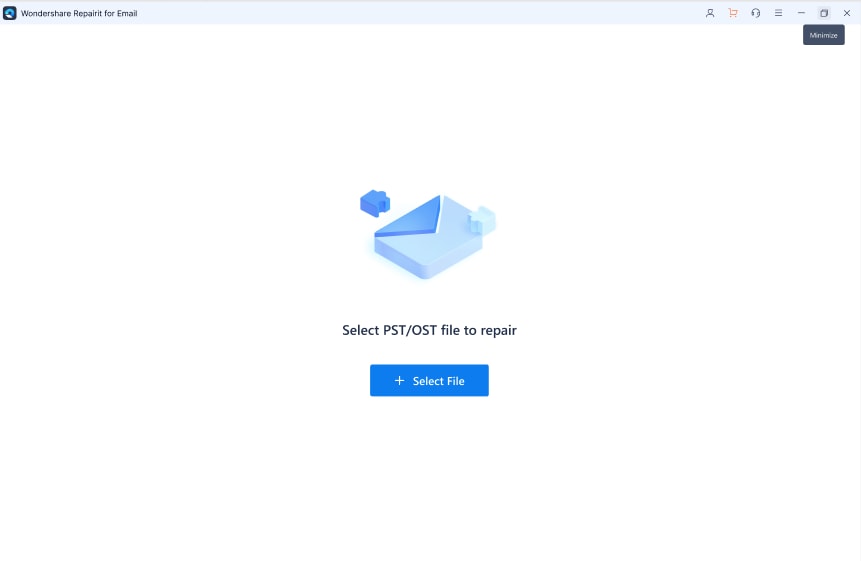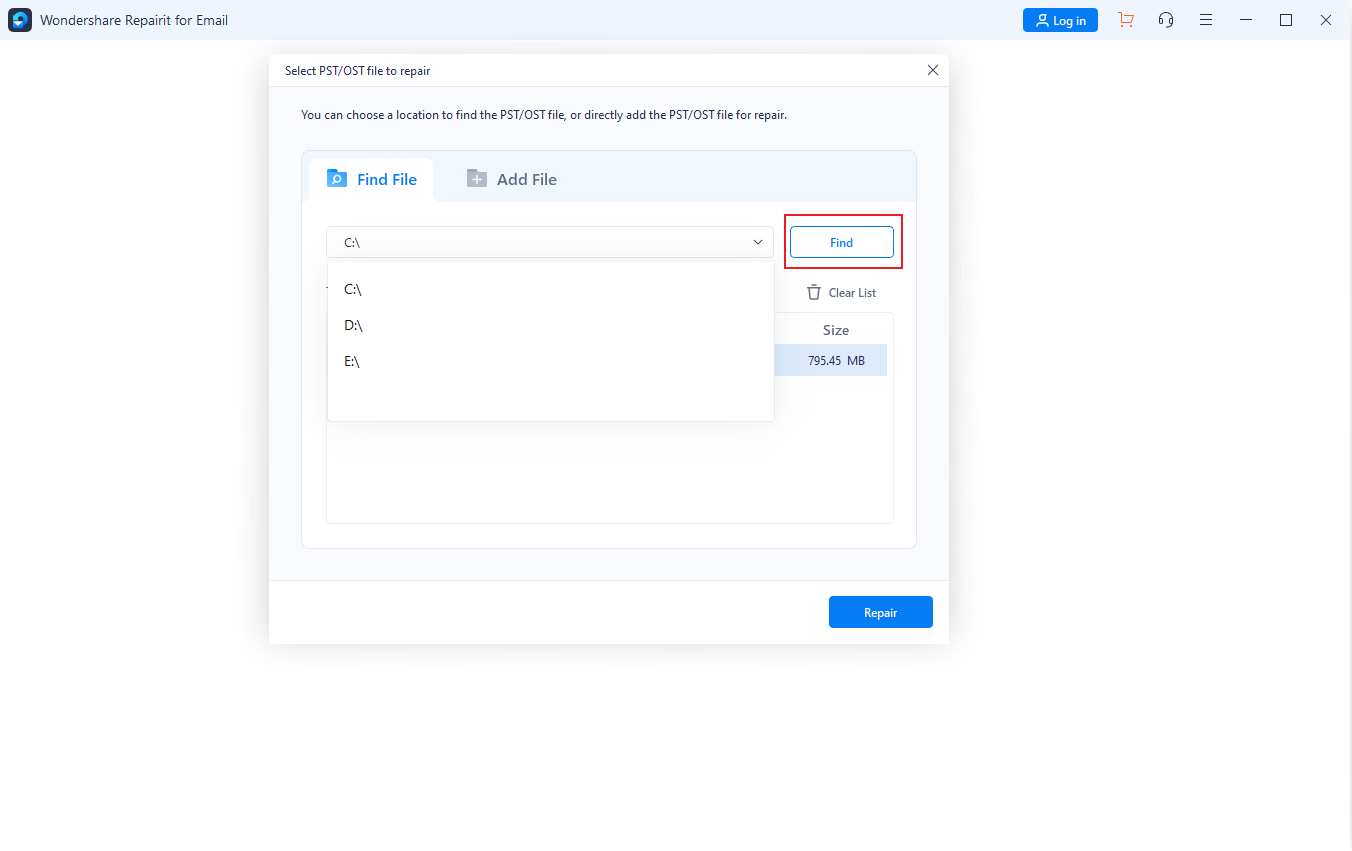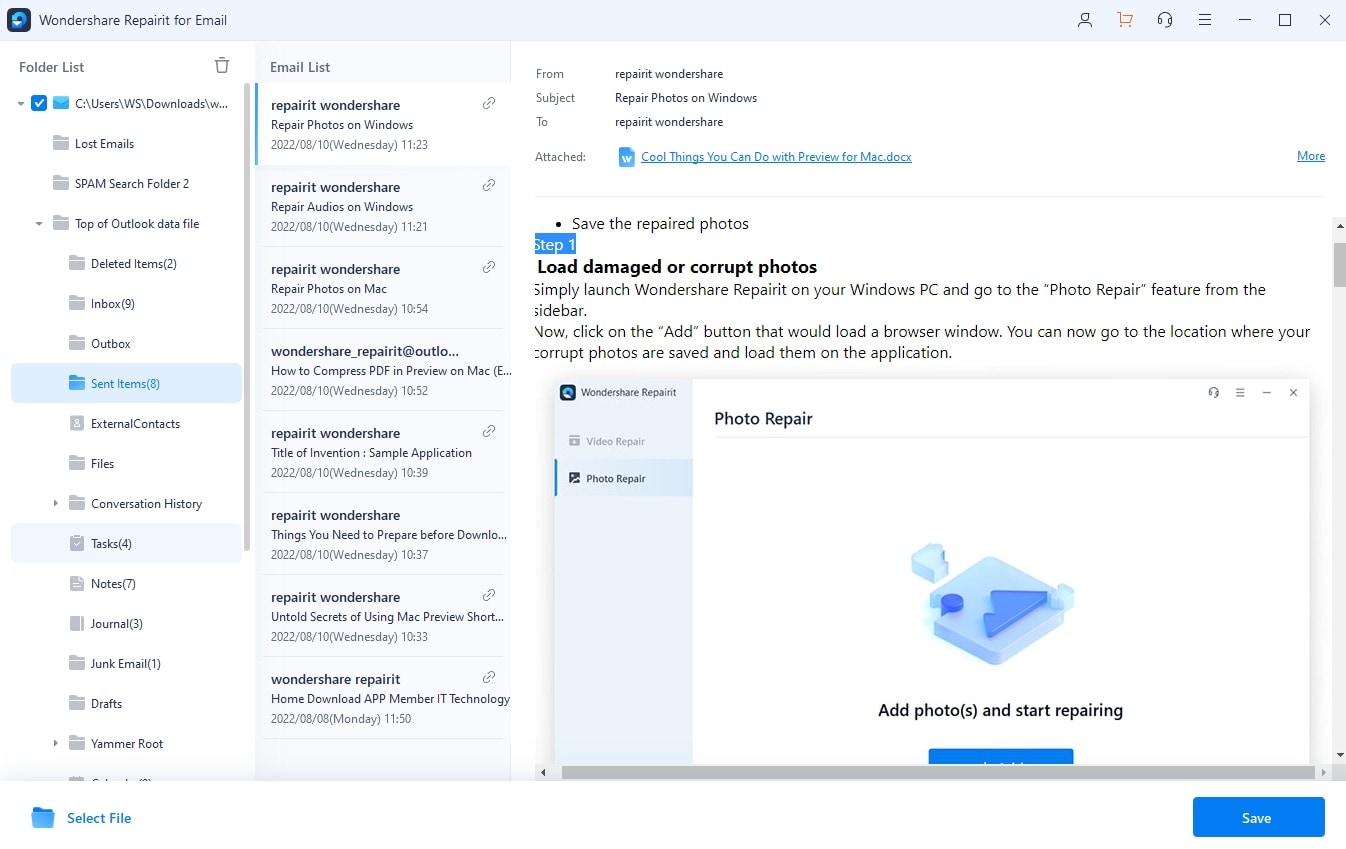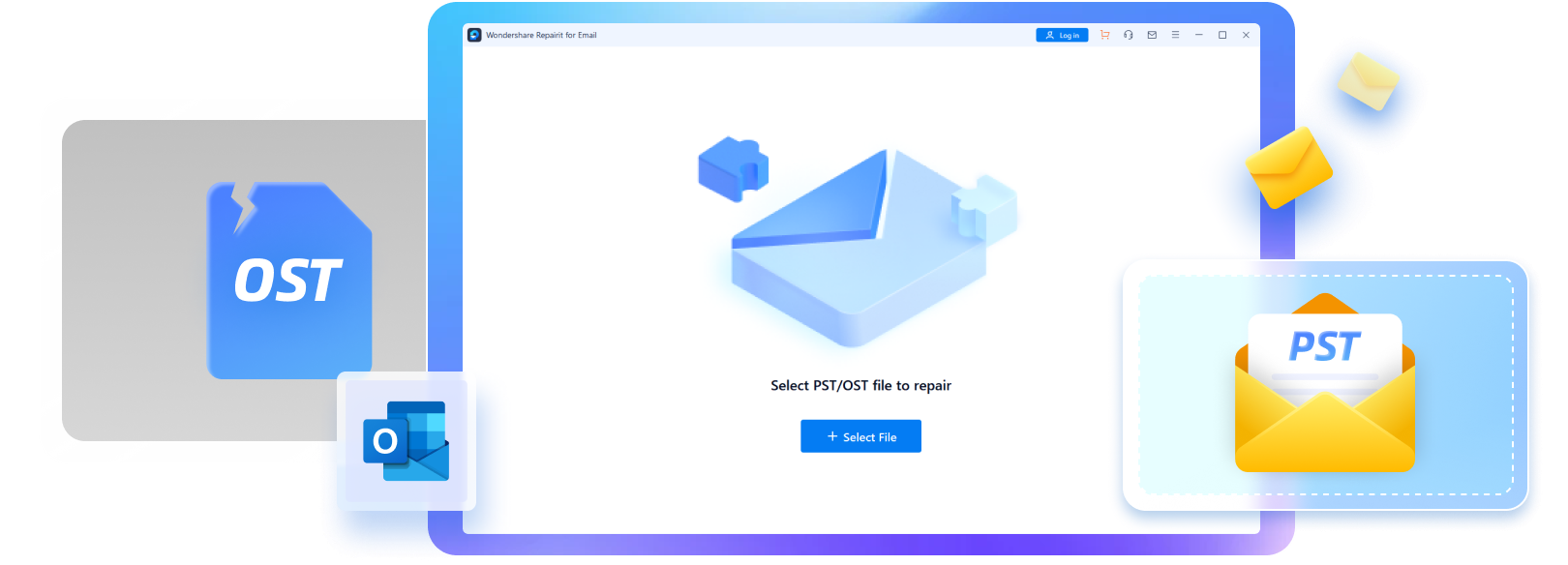Most of you might not know what the Trusted Platform Module is. Developed for improving security, TPM is a microchip embedded within the motherboard. It is designed to focus on security-related features, which include storing data. The TPM holds vital information such as confidential certificates, passwords, and encryption keys.
The current version of TPM 2.0 is operating across Windows devices. While it provides the respective services, there is a prevailing threat of malfunctioning.
What to do if you observe the "Outlook Trusted Platform Module has malfunctioned?" In such a case, you need to look into the error and figure out a perfect solution. Now let's read this article to get the solutions.
Part 1: What Are the Different TPM Malfunctioning Errors?
Before we lead into the solutions to TPM malfunctioning, there are things to consider. TPM, consequently, features multiple error codes and exists in various forms. As we are to teach you the TPM malfunctioning errors, we shall list them. This will give you an understanding of how these errors co-exist in the system.
Let's see what kind of error codes you can come across while discussing TPM errors:
- 80090016
- 80090030
- C0090016
- 80090034
These error codes, in particular, come up when you try activating your Microsoft 365 apps. There are many reasons related to it.
TPM can malfunction for many basic reasons, which include outdated TPM drivers. There can also be direct issues within the TPM keys, or the NGC folder might be corrupted. The device stops identifying the chip, which then raises problems across the computer. It can also have direct implications on the Windows security system.

Part 2: Detailed Solutions for Fixing "Trusted Platform Module Has Malfunctioned" Errors
You can come across many solutions; however, an overview is necessary. We will be checking out why the computer shows Outlook 80090016 and other errors. You should be careful while assessing these solutions for your TPM errors.
Solution 1: Try Removing the Microsoft Office Credentials
Before you attempt to activate your Office products, you should consider this solution. You can remove the credentials if you cannot access your Outlook due to the TPM errors. This needs to be performed through a set of simple steps, as defined below:
Step 1: Access the "Search" icon on the taskbar and type "Credential Manager" in the available space.
As the results appear, tap on the right option. As you lead into the next screen, select "Windows Credentials" to proceed.

Step 2: You can find the Office credentials under the "Generic Credentials" section.
Expand any Office credentials under the list and select "Remove" to delete them. Confirm the process of getting a prompt across the screen. Once done with it, restart your computer to save all changes.

Solution 2: Update the Trusted Platform Module Drivers
One probable reason for TPM 80090016 or other errors was the outdated TPM driver. To cater to this, you can update or uninstall the TPM drives from your computer. This will essentially help you keep the TPM device drivers up-to-date and running. It would surely resolve all malfunctioning problems across the device.
Update the TPM Drivers
Step 1: You need to use the shortcut keys of "Windows + R" to launch the Run program.
Type "devmgmt.msc" in the provided space to launch Device Manager.

Step 2: Navigate through the drivers and find the "Security devices" category in the list.
Then, with the TPM driver on your front, right-click on it and select "Update driver" from the menu.

Step 3: On the next window, you can select the option of "Search automatically for drivers."
Let Windows update the drivers automatically for you.

Delete the TPM Drivers
Step 1: You can also uninstall the drivers on your computer and easily reinstall them.
Open your Device Manager and proceed across the "Security devices" section.
Step 2: On locating the TPM drivers, right-click and select "Uninstall device."
Confirm the process across the pop-up and restart your device.

Step 3: The TPM drivers are automatically reinstalled once you reboot your device.
However, if it does not happen, you need to open the Device Manager again. Proceed to the "Actions" tab and select "Scan for hardware changes." This will automatically search and install the drivers for you.

Solution 3: Overtake the Ownership of the NGC Folder
Check out the NGC folder if you have observed Error Code 80090030 while accessing Outlook. It contains the security information of the Windows device, which can get corrupted. You need to delete the folder's content because there is no certain reason for its corruption. For that, you must first take up ownership of the NGC folder. To do this, you need to look out the steps displayed below:
Step 1: You must open File Explorer on your Windows device and access the following address:
C:\Windows\ServiceProfiles\LocalService\AppData\Local\Microsoft

Step 2: As you lead into the respective folder, find the "NGC" folder and right-click on it.
Select "Properties" from the drop-down menu.

Step 3: Access the "Security" tab on the next screen and select "Advanced."
This will open up a new window.

Step 4: On the next screen, proceed to the "Change" button adjacent to the "Owner" settings.
Provide your Windows user account name in the empty box and tap "OK."

Step 5: Next, you have to check the box of the option "Replace owners on sub containers and objects."
Click on "OK" and confirm the prompt to change the owner settings.

Step 6: Lead into the NGC folder and delete all its contents.
Restart the computer to update all the problems across TPM.

Solution 4: Clearing the TPM Keys
Another way to help you is resetting the TPM to its default state. While Error 80090034 is a consistent problem that needs to be answered, clearing it is essential. If you clear out the TPM keys, it can surely be of help. We will look into the methods that can be used for this solution. Look ahead into the respective solution for an in-depth view:
From the Settings
Step 1: You must access the Search bar from the "Windows + S" shortcut key.
As it opens up, type "Windows Security" in the available space and open it up.

Step 2: Select "Device security" from the left panel to lead into the respective settings.
You have to proceed with the "Security processor details" option under the "Security processor" section.

Step 3: Locate the "Security processor troubleshooting" option on the following screen.
As you access the respective option, click "Clear TPM" to execute the task.

Step 4: For confirmation of the process, click "Clear and restart" across the next screen.
This will reset the security processor across your Windows device.

From Run Program (An Alternative)
Step 1: You can access the Run program with the shortcut keys of "Windows + R."
As it opens up, type "tpm.msc" and run the respective command.

Step 2: In the "Action" tab, look for the option of "Clear TPM."
Select "Restart" from the options available to clear the TPM keys.

Solution 5: Try Disabling Modern Authentication Protocols
As you face TPM 80090034 errors on your Office 365 apps, they operate on their protocols. Microsoft Office 365 utilizes its modern authentication protocols. This includes OAuth and SAML, which are essential for activation. Although they offer enhanced security, they can cause TPM errors. If you tend to disable them across your system, it will help out. Look out in the following steps to understand the process in detail:
Step 1: Access the "Search" bar on the taskbar and open up the Run program.
Type "regedit" in the space and open up the Registry Editor.

Step 2: Look across the following path navigation across the address bar:
Computer\HKEY_CURRENT_USER\SOFTWARE\Microsoft\Office\16.0\Common\Identity

Step 3: In the vacant area across the right panel, right-click to select the "New" option.
Following this, choose "DWORD (32-bit) Value" from the available options.

Step 4: Rename the newly entered key as "EnableDAL" and double-click to open it up.
Set the "Value data:" field to 0 and restart your computer.

Solution 6: Enable Memory Integrity on Computer
Windows offers a native security feature for high-security assurance known as Memory Integrity. However, if it is not in use, there is a chance that the TPM 80090030 error may occur. To resolve this issue, you need to look out the following steps:
Step 1: Access the "Search" bar on the taskbar and type "Windows Security."
From the sidebar, proceed to the "Device security" to access the new options.

Step 2: Under the "Core isolation" section, find the "Core isolation details."
This will open up a new set of settings. Enable the toggle under the "Memory integrity" option and reboot your Windows PC.

Solution 7: Disabling the Antivirus Software
Third-party software can become a reason for such processing issues. Problems like TPM 80090016 Outlook can be caused due to these software. Anti-virus software has a lot to offer to its users. They can still become major hindrances to processes like the TPM module. The perfect resolution to resolve the problem is to disable the software at your ease. This will amend all of the issues caused across the TPM module.
Bonus Tip: What To Do If Outlook Data File Is Corrupt?
The problem may include other elements if it does not involve the TPM module. A critical consideration is the Outlook data files. Outlook is directly connected to the Windows computer, so email clients save data in files. These files, if corrupted, can cause similar problems and make Outlook inaccessible. To answer this issue, you need a complete repair tool that answers your concerns.
Wondershare Repairit for Email is one such platform designed for this purpose. It provides users with a system that makes operations easy. While it supports both Windows and Mac systems, it is quite optimized. Furthermore, you can repair your PST and OST files under the same platform. This is one of the most highlighting features of this tool. If you are considering fixing your data files across Windows, you should try this tool.

-
Repair damaged PST & OST Files in Outlook in all Email corruption scenarios, such as hard disk crashes & bad sectors, virus attacks & tojan horse, outlook corruption & malfunctions, improper shutdown procedure, etc.
-
Restore Outlook emails deleted for a long time and extract the email messages, folders, calendars, etc. within seconds.
-
Restore Outlook Emails deleted for a long time with a very high success rate.
-
Repair emails in bathes without size limits and support to preview all of them before saving.
-
Compatible with Windows 7/8/8.1/10/11, Windows Server 2012/2016/2019, and MacOS X 10.11~ MacOS 12 (Monterey).
For this, you need to look out the steps described below:
Step 1: Launch Repairit on Your Computer.
Start Wondershare Repairit for Email on your computer. You can find this as a separate application on your Windows PC. Then, lead to the 'Select File' button to import the files.

Step 2: Import Corrupted Outlook Data File.
The platform allows you to find or add corrupt data files. If you wish to locate them, proceed to the "Find File" tab. Here, you need to select the drive to search for the file. You can also use the "Add File" tab to search for a data file manually. On adding the file, tap on "Repair" to start the process.

Step 3: Repair and Preview Results.
The data would be displayed across the preview screen. All the content of the Outlook data file can be viewed with ease. Look over the data and select "Save" to export fixed emails on your computer.

Ending Words
This article has featured a consistent overview of the TMP module issues. With an overview of the errors that explain the error type, a list of solutions was put in focus. These solutions clearly answer the "Outlook trusted platform module has malfunctioned." If you have a corrupted data file, consider using a email repair tool. Wondershare Repairit for Email is the perfect answer to this problem.


 ChatGPT
ChatGPT
 Perplexity
Perplexity
 Google AI Mode
Google AI Mode
 Grok
Grok
